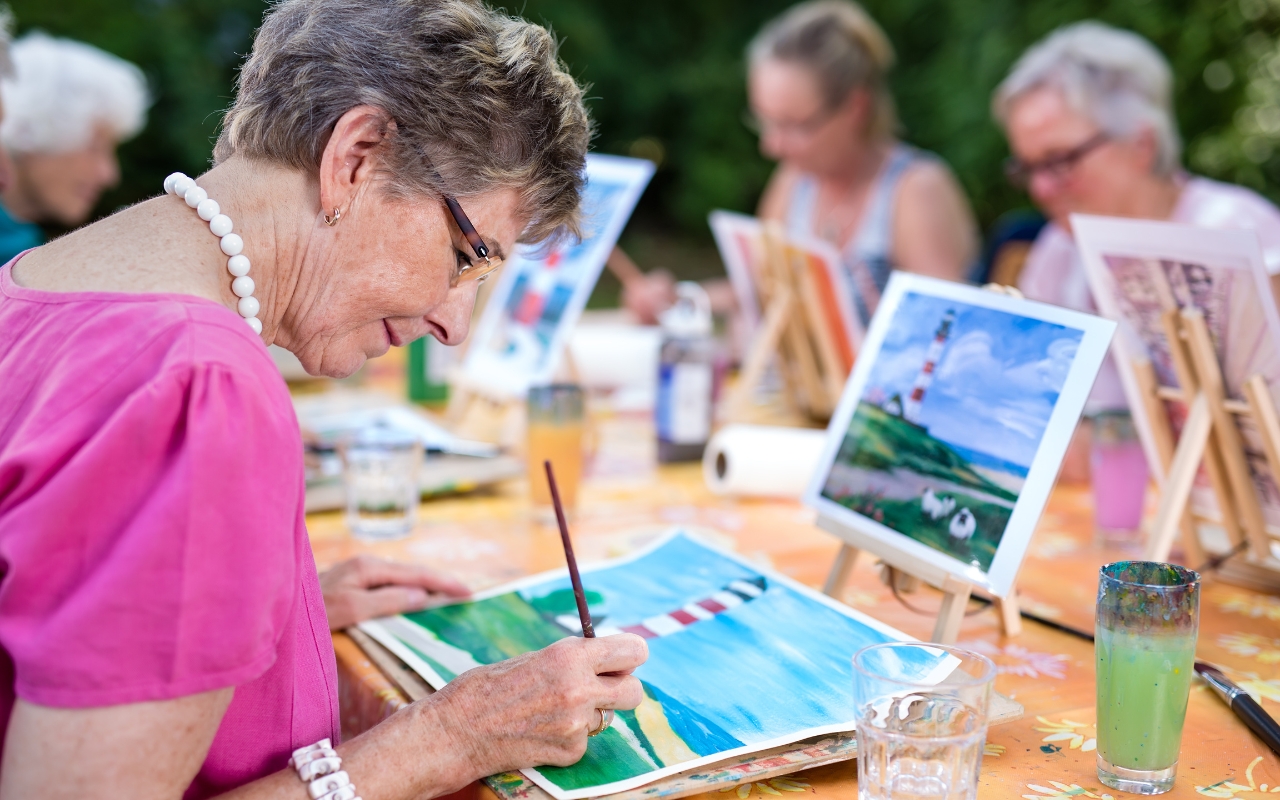Fitness
How can art therapy help with mental health?
Published
2 years agoon
By
mbkteam
Art therapy, a therapeutic approach that utilizes creative expression to promote mental health, has gained significant recognition in recent years. Among various forms of intervention, art therapy stands out for its ability to address emotional, psychological, and social issues, providing a unique pathway to healing and personal growth. This article delves into the multifaceted benefits of art therapy, explores its applications across different mental health conditions, and underscores its potential as a vital component in mental health care.
Art therapy's roots can be traced back to the mid-20th century when it emerged as a distinct discipline from art and psychotherapy. It harnesses the therapeutic potential of art-making, allowing individuals to express feelings that might be difficult to articulate through words. By engaging in creative activities like drawing, painting, sculpting, and other art forms, participants can explore their emotions, develop self-awareness, and discover new perspectives on their experiences.
One of the most compelling aspects of art therapy is its versatility. Unlike other therapeutic modalities that rely heavily on verbal communication, art therapy provides an alternative means for expression. This is particularly beneficial for individuals who find it challenging to convey their thoughts and emotions verbally, such as children, those with language barriers, or individuals experiencing severe trauma. Through the non-verbal language of art, they can communicate their innermost feelings and experiences in a safe and supportive environment.
Art therapy is effective in managing a wide range of mental health conditions. For instance, individuals with anxiety disorders can benefit greatly from art therapy. Engaging in creative activities can serve as a form of mindfulness, helping to reduce anxiety and promote relaxation. A study involving participants with generalized anxiety disorder revealed that art therapy significantly improved emotion regulation, enhancing their ability to manage anxiety symptoms. Engaging in art-making activities such as clay work, painting, and drawing allowed participants to express and process their emotions in a non-threatening way, reducing anxiety levels.
Similarly, for individuals with depression, art therapy can provide a much-needed outlet for expression and healing. Creating art can be inherently cathartic, allowing individuals to externalize their inner struggles and gain a sense of control over their emotional experiences. Art therapy sessions often encourage self-reflection and introspection, helping individuals identify and challenge negative thought patterns. Art therapy can support individuals in their journey toward recovery and well-being by fostering a sense of accomplishment and boosting self-esteem.
Art therapy has also shown promise in the treatment of post-traumatic stress disorder (PTSD). Trauma survivors often struggle with intrusive memories, flashbacks, and emotional numbing, which can be challenging to address through traditional talk therapy alone. Art therapy offers a non-verbal approach to trauma processing, allowing individuals to explore and express their traumatic experiences safely. Through metaphor and symbolism in their artwork, trauma survivors can gain new insights into their experiences and work towards healing and integration. The creative process can help them reconnect with their emotions, develop a sense of mastery over their trauma, and foster resilience in the face of adversity.
In addition to its applications in treating specific mental health conditions, art therapy can be a valuable tool for promoting overall well-being. Engaging in creative activities has been linked to numerous psychological benefits, including improved mood, increased self-awareness, and enhanced coping skills. Art-making can provide a sense of joy and fulfillment, offering a welcome respite from the stresses of daily life. It can also serve as a self-care means, allowing individuals to nurture their creativity and prioritize their mental health.
Moreover, art therapy can be crucial in social and emotional development, particularly for children and adolescents. Through creative expression, young people can explore their identities, develop emotional regulation skills, and strengthen their social connections. Art therapy can provide a safe space for them to process difficult emotions, build resilience, and develop healthy coping mechanisms. By fostering self-expression and creativity, art therapy can support the holistic development of children and adolescents, helping them to navigate the challenges of growing up.
In the realm of dementia care, art therapy has shown promise in improving cognitive functioning and enhancing the quality of life for individuals with Alzheimer's disease and other forms of dementia. Art-making can provide a form of cognitive stimulation, helping to maintain and improve mental abilities. Drawing, painting, and collage-making can engage multiple cognitive processes, including memory, attention, and problem-solving. Art therapy can also provide a means of communication for individuals with dementia, allowing them to express themselves when verbal communication becomes challenging. By engaging in creative activities, individuals with dementia can experience a sense of accomplishment, reduce feelings of isolation, and enhance their overall well-being.
The benefits of art therapy extend beyond individual mental health. It can also have a positive impact on communities and society as a whole. Art therapy programs can provide therapeutic support to marginalized and underserved populations, including refugees, individuals experiencing homelessness, and incarcerated individuals. Art therapy can empower individuals to reclaim their voices, rebuild their lives, and contribute to their communities by offering a means of expression and healing. Moreover, art therapy can raise awareness about mental health issues and reduce stigma, fostering a more compassionate and inclusive society.
While the therapeutic benefits of art therapy are well-documented, it is essential to acknowledge that it is not a standalone treatment. Art therapy is most effective when integrated into a comprehensive treatment plan that may include other therapeutic modalities and medical interventions. Collaboration between art therapists, mental health professionals, and medical providers is essential to ensure holistic and individualized care for individuals seeking support.
In conclusion, art therapy offers a powerful and transformative approach to mental health care. Its ability to facilitate non-verbal expression, promote emotional healing, and foster personal growth makes it a valuable tool in addressing various mental health conditions. Whether used as a primary intervention or as a complementary therapy, art therapy can potentially enhance the well-being of individuals and communities alike. By embracing the creative process, individuals can unlock new pathways to healing, self-discovery, and resilience, paving the way for a brighter and more hopeful future.
For more information on the benefits of art therapy and how it can support mental health, you can explore resources from reputable organizations such as the Mayo Clinic and the Mental Health Foundation. Additionally, you can learn more about specific art therapy interventions and their research-backed benefits from studies published on NCBI.
By incorporating art therapy into mental health care, we can harness the healing power of creativity and provide individuals with new tools to navigate their mental health journeys. Whether you are a mental health professional, an individual seeking support, or simply interested in exploring the intersection of art and mental health, art therapy offers a promising and enriching path toward well-being and personal growth.













